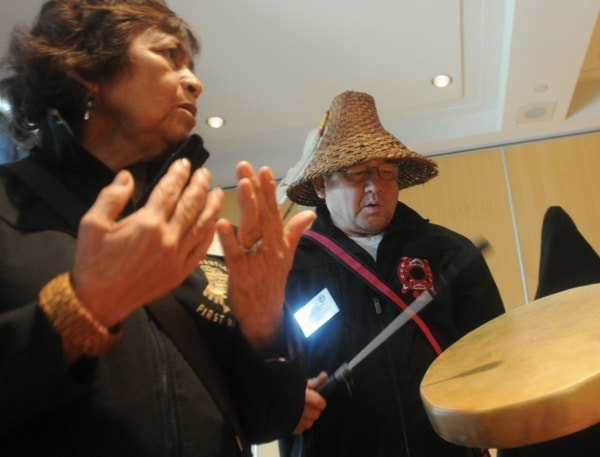For aboriginal students to successfully navigate western culture, they first need a firm understanding of their own culture, a forum on aboriginal education heard Monday.
More than 110 aboriginal representatives from the Katzie and Kwantlen First Nations, Fraser Valley Métis Association, the Fraser River All Nations Aboriginal Society, as well as students, teachers, and administrators, attended School District No. 42’s aboriginal education forum at Meadow Gardens Golf Course in Pitt Meadows.
Doug Hoey, the district’s principal for aboriginal education, said the event was meant to bring together partners and seek input on how to better serve the district’s aboriginal students.
Of the more than 15,000 students attending class in School District No. 42, 1,038 are self-identified as being aboriginal. On average, aboriginal students in Maple Ridge and Pitt Meadows graduate at a rate 10 to 12 per cent lower than non-aboriginal students.
“We want to level the playing field,” said Hoey.
Key to that is instilling aboriginal students with pride in their own culture.
While student numbers have declined in the district in recent years, the number of students identifying themselves as aboriginal has increased.
That’s a sign of changing attitudes towards aboriginal culture, says Hoey.
“More and more students are saying, ‘I’m aboriginal, and I’m proud of it’,” he said. “That’s because the culture is becoming more respected, because we understand it more.”
Signs of aboriginal culture are evident throughout the district, with carvings, totem poles, and native art adorning many elementary and secondary schools.
“There’s a lot more local aboriginal culture in schools now than when I was going to school,” said Katzie Chief Jay Bailey, who has a son attending Grade 5 in the district. “Our kids need that, it gives them a sense of pride.”
Of students eligible to graduate in Grade 12, the graduation rate for aboriginal students is 94 per cent, the same as non-aboriginal students.
“Those who make it to Grade 12 do just as well, so what we are seeing is that we are losing them much before that,” he said.
Bailey said he would like see more of an emphasis placed on career planning.
“Ninety per cent of the kids that we’ve talked to don’t know what they are going to do after school,” he said.
Hoey said there is much to learn from aboriginal traditions of education, such as a focus on oral-learning, that is both hands-on and takes place outside, in the environment.
“It’s not segregated teaching,” he said. “It’s inclusive ... and, at the end of the day, it’s not just aboriginal students who can benefit from these different styles of teaching.”
